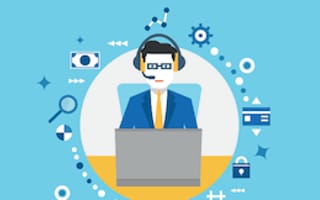[ibimage==52010==Original==none==self==ibimage_align-center]
The prospect of self-service can evoke mixed emotions in some customer service departments. On one hand, allowing customers to serve themselves—finding answers to common questions and solutions to common problems—takes away some of the burden of the customer service representative. On the other hand, it means sacrificing some degree of control over the situation.
This problem is compounded by the fact that there’s a significant digital gap between you and the majority of your customers. Because all your customers have different preferences and different habits while using different devices and services, it’s almost impossible to please everybody with a single self-service program.
That being said, there is a 5-step strategy you can implement to close that digital gap in self-service.
Step 1: Establish a Searchable, Comprehensive Resource Center
Your first step is to build the foundation of your self-service. In order to service themselves, your customers are going to need information—lots of it. That means writing out dozens, if not hundreds, of helpful, step-by-step articles and FAQ sections that answer common questions comprehensively and give users exactly the information they need to perform certain tasks themselves. You need to make sure this resource center is searchable as well. Most users will want to find a quick answer after entering a brief query, rather than browsing for an answer in a labyrinthine network of topics and subtopics.
Step 2: Make Your Self-Service Known
Your next responsibility is to make sure your customers know this self-service platform exists. While some users will find it naturally through their own means, you need to be there for the remaining portions of your audience. Link to it and advertise it on your social media profiles. Mention it in your user manuals or in your service contracts. Refer people to it when they’re on hold.
Step 3: Hedge Your Bets
People have different preferences when it comes to online help. Some prefer written text, while some prefer image-based walkthroughs and others would rather watch a video. Some prefer visiting a website directly while others would prefer seeing content on social media. Hedge your bets by covering as many of these bases as possible and pleasing the widest possible audience.
Step 4: Open the Doors for Traditional Customer Support
When implementing your self-service plan, be sure not to neglect your traditional means of customer support. Keep the phone lines open, and don’t reduce your staff until you’ve tested your digital resource center in a live environment. Some people will always needs one-on-one conversations to be fully satisfied with a solution to a problem.
Step 5: Review, Measure, Improve
Of course, there’s always room for improvement. During the early stages of your digital self-service plan, it’s inevitable that you’ll run into trouble. Some of your users won’t understand your system. Some won’t be able to find what they’re looking for. Some just flat-out won’t like it. But every point of contention of dissatisfaction you experience from a customer is an opportunity to improve on a point of failure. Be sure to collect feedback from your digital users, in every possible medium—ask detailed questions that honestly evaluate your service, and review those comments to find ways to make your system even better. This is an ongoing process, so commit yourself to continuous self-improvement.
Put this strategy to good use in your existing customer service program, and don’t forget to uphold the tenets of quality customer service. Even though many of your users will be helping themselves, it’s still your responsibility to ensure that your service is satisfactory.
For more information on how Desk.com can help you set up fast, awesome self-service, check out: https://www.desk.com/product/support






